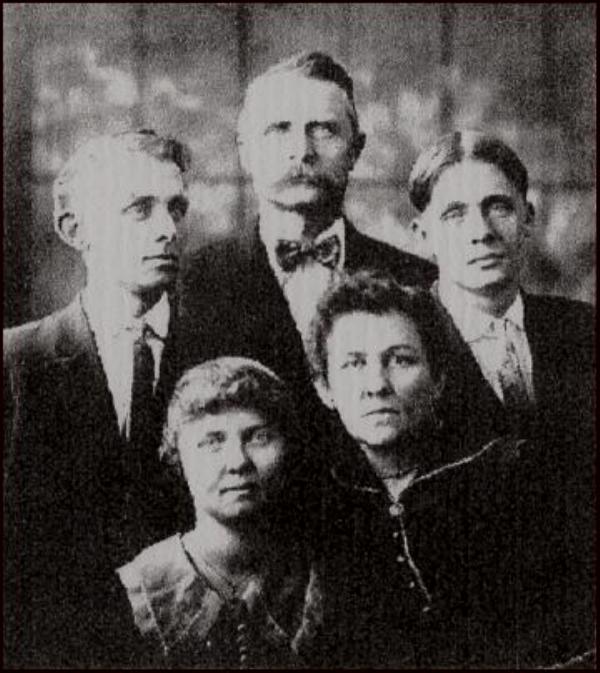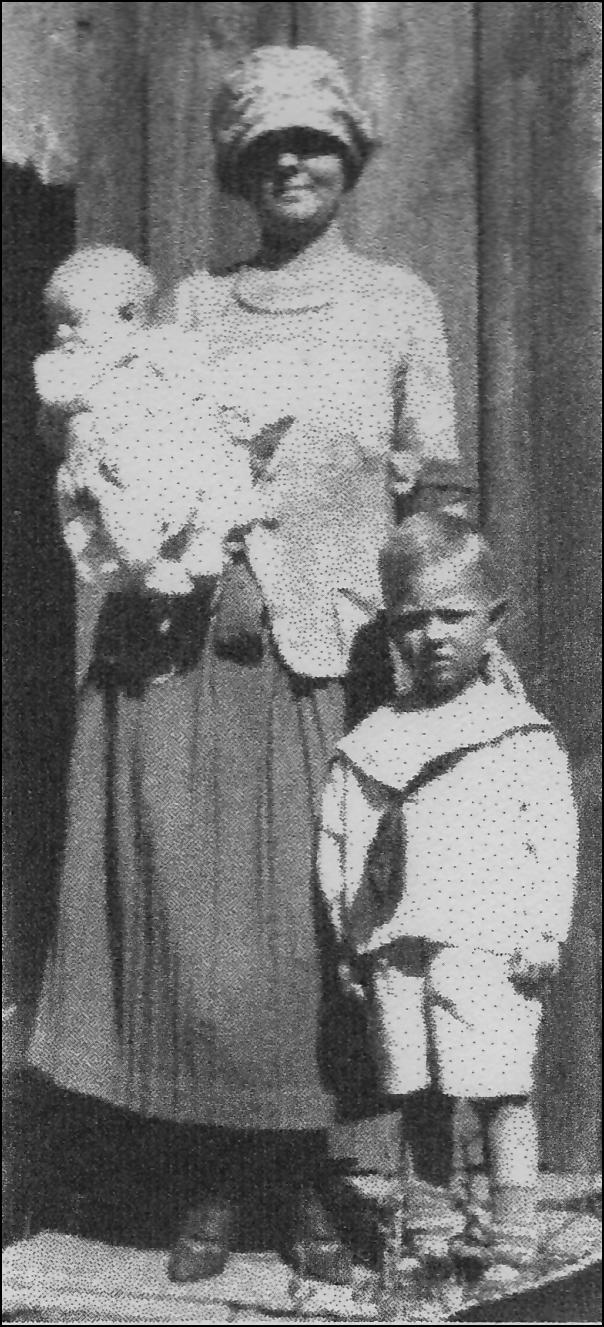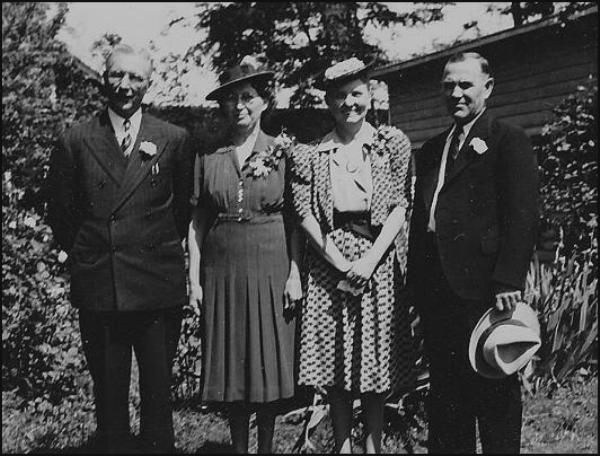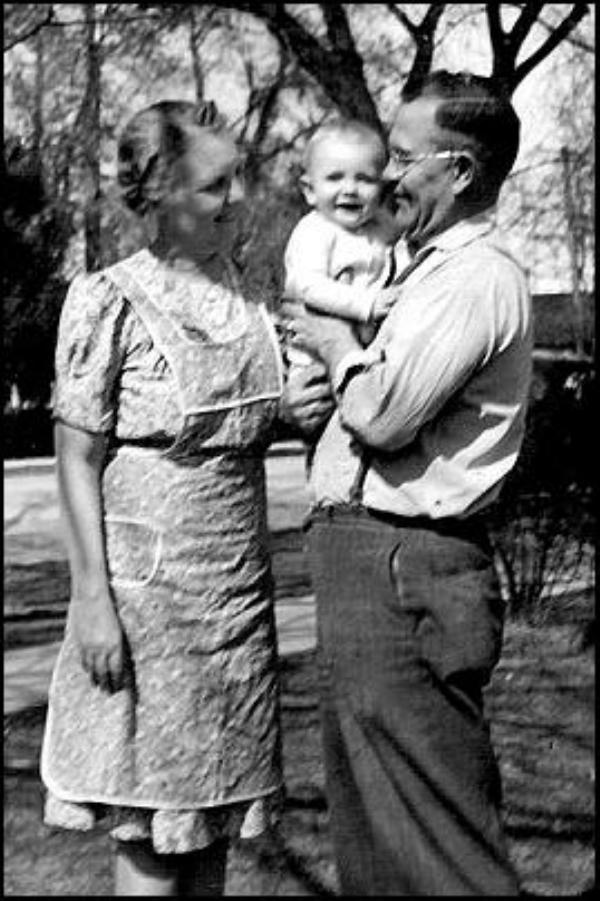She married A.E. Schwartz in August 30, 1919, in Nampa. They had two sons, William and George.
From William A. Schwartz (her older son):
As a girl she was known as a tom-boy. Friends that had known her as a girl called her "Tommy." One niece always called her "Aunt Tommas."
Went to the first grade in Payette, Idaho. Went to the second and third grades in Minidoka, Idaho. She went from the fourth grade through high school in Mountain Home, Idaho. After high school she took a summer normal school [teaching college] course and taught in a rural school in Elmore County [in which Mountain Home is the main town]. She then went to business college in San Francisco. She taught at Link's Business School [in Boise] and worked as a legal secretary at the law firm of Hawley and Hawley. After she was married, she worked in the office of the Idaho Free Press [newspaper] in Nampa and then the office of the family business [Schwartz Printing Company]. She was the department [state] secretary of the American Legion Auxiliary for thirty years.
Just before she started school, her father moved the family from Lenora to Payette, where his father and two brothers were homesteading. After a year, they moved to Minidoka, where he was an agent for the Union Pacific Railroad. He was then transferred to Mountain Home, where he later farmed and became postmaster.
What I remember:
She was a champion typist as a young woman; I was told she could type 120 words a minute (and on a manual typewriter, of course).
Her parents apparently were not happy with her marriage to my grandfather.
After she married my grandfather, they lived in a house on 9th Street South at the corner of 16th Avenue South in Nampa. Her oldest son William was born there in 1920.
She was my grandfather's second wife. I was told, I'm not sure by whom, that my grandfather's mother, who we called Grandma Hawk, broke up his first marriage and tried to break up his second, apparently because she didn't think the women involved were good enough for her son.
She was a precise person for whom good enough wasn't really good enough. In the early years of the printing business, she and her husband proofread everything that went through the shop, one reading aloud, the other writing down the corrections.
In the late sixties (I think), I taped interviews with both my grandmothers. My maternal grandmother had many memories of the past that she thought worth relating (with some prompting). My paternal grandmother, on the other hand, was focused on the present and future, and had little to say about the past. (EAS)

Oregon Short Line Railroad system in southwestern Idaho in 1922 showing location of towns where Alpha White went to school and worked. From east to west along the main line, they are Minidoka (incidentally, where a Japanese internment camp was set up during World War II), Mountain Home, Boise on a spur from Nampa, and Payette (where I went to school in the seventh and eighth grades). (Source: http://texashistory.unt.edu/ark:/67531/metapth192776/m1/1/.)





